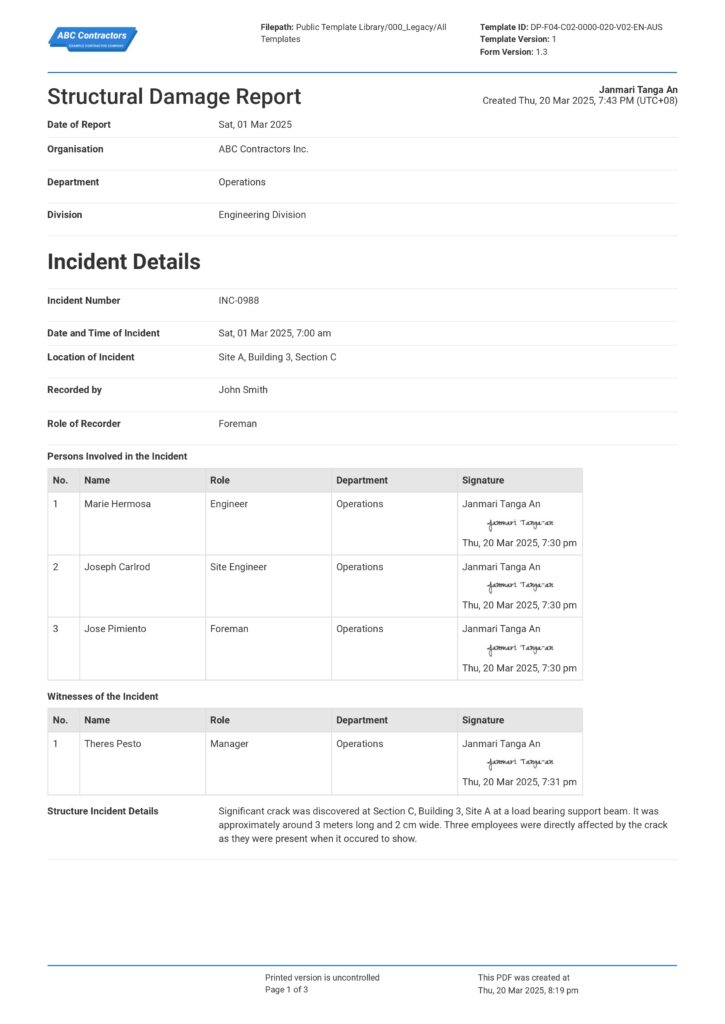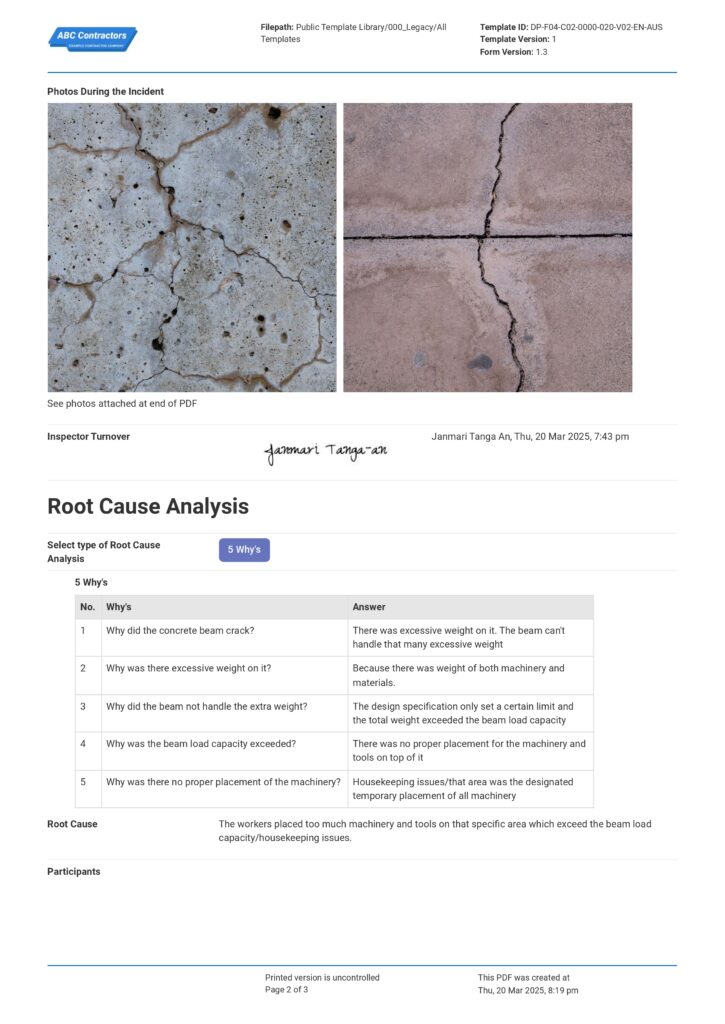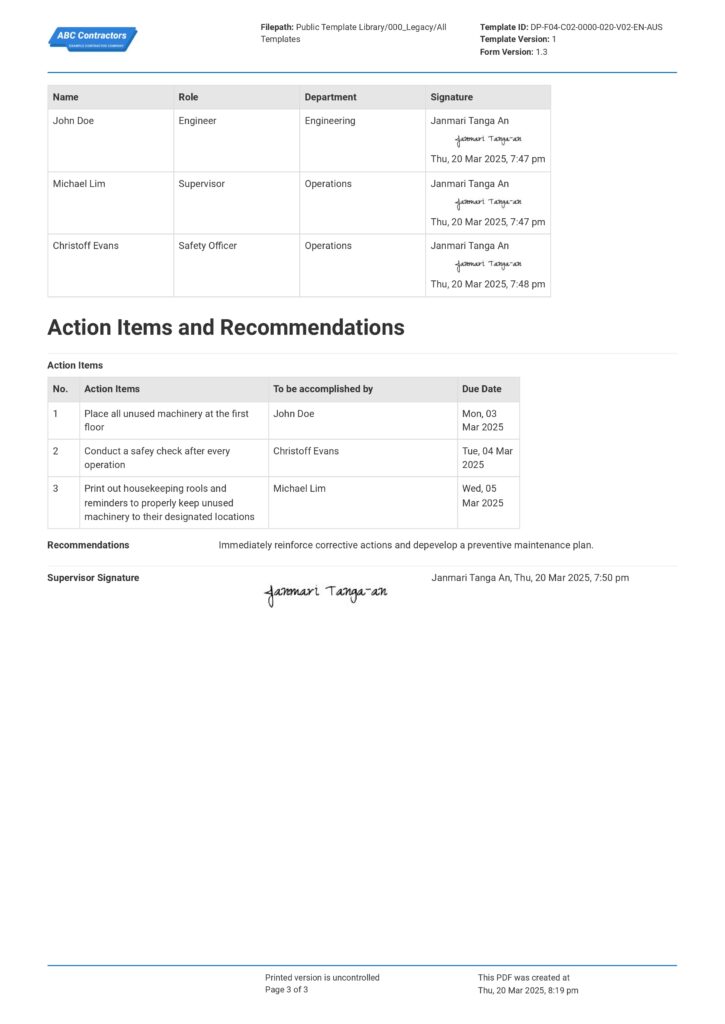Article Page – Structural Damage Assessment
Structural Damage Assessment
In this article, we will cover the most critical details about the structural damage assessment process, as well as provide you with tips and resources to improve your own processes.

What does Structural Damage Mean?
Structural damage is a legal term that encompasses the physical harm, impairments, or deterioration of a building, infrastructure, or any constructed property.
It is important to understand that structural damage must be defined in legal terms to establish clear grounds on insurance claims, regulatory compliance, and building standards.
Recognising the indicators of structural damage at an early stage may be very important in reducing the severity of the damage, assuring the safety of the building, and perhaps saving money on expensive construction repairs.
This damage may have been caused by a variety of circumstances, such as environmental variables, improper building procedures, or even just plain wear and tear over the course of time.
Structural Damage Assessment
Despite our doing our best efforts to prevent deterioration, buildings are susceptible to damage from wear and tear, environmental factors, and unforeseen circumstances. However, there is a way to recover a building from these factors. A structural damage inspection offers comprehensive and in-depth details on how and why the structure failed or was damaged. This explains what went wrong, how it occurred, and what the establishment can do to prevent it from happening in the future.
This report is important to every company because it documents the issues that occurred, the solutions that were offered to resolve them, and information that might help reduce the likelihood that similar occurrences will happen in the future.
The structural damage report shown below can quickly update the structural damage report by supplying the incident data, determining the underlying cause, and offering action items to prevent it from happening again. This also lets you upload photographs and immediately sign and authorise your structural damage report, accelerating the procedure.
Having a standard format for your site visit reports is essential in ensuring consistency across all documents, and efficiency in documenting project or site observations and details.
Using a standardised site visit report format and having uniformity makes it easier for stakeholders, workers, employees, and other persons involved to navigate through and compare all data from all site visit reports. Tracking patterns and recurring issues is one of the purposes of a site visit report, and having a fixed structure aids in a smoother workflow.
Which Parts of the Building are Vital to be Assessed for Structural Damage?
Inspecting the right parts of the building is essential since failing to do so might endanger the very integrity of the building. This can compromise the safety of everyone in it and around it. Furthermore, if this occurs/happens, this might also harm the company's image as well as its finances.
This section of the article will help you look at the right parts of the building so that the next time you conduct an inspection, you can prioritise these crucial parts, which have a huge role in keeping the whole building strong and stable.
The following are the structural parts that are critical to be observed and inspected:
Foundation
The foundation of the building is the base that distributes the load of the structure to the ground and soil, balancing the whole building and providing strong stability. Damages on the foundation, if left unchecked, can lead to life-threatening circumstances. It can commence a domino effect of damages that will branch out to other important structural parts. The columns could start deflecting, the walls can start warping, floors can start cracking, and other structures will show signs of damage. Having said this, the whole building could potentially collapse, and that is an event that nobody would ever want to happen. Now that you know this, this structural part of the building should be provided with utmost priority and constant frequency when conducting inspections.
Load-Bearing Walls
Load-bearing walls that are capable of carrying loads are an essential component in ensuring the structural soundness of residential structures. The weight of the floors, roof, and other structural components is supported by these walls, which function as the backbone of the building. Through the distribution of the vertical and horizontal loads that are placed on the structure, they serve the fundamental purpose of guaranteeing the building's stability and avoiding structural failures. In light of this, knowing that these parts support other structures, it is vital to also make this one of the critical structural parts that needs to be provided with priority when conducting an inspection.
Roof Structure
When it comes to withstanding severe weather conditions, such as heavy rain, snow, wind, and even hail, having a sturdy roof structure is quite necessary. In order to ensure that the roof covering remains intact and continues to provide enough protection for your property from water infiltration, wind uplift, and other types of damage caused by the weather, an inspection is quite necessary. When damages are found, it could compromise the safety of the settlers inside the building, especially when the mentioned weather conditions are occurring.
Beams and Columns
Both columns and beams are structural components that function in a way that is comparable to one another. They make it possible for buildings to properly transmit load and other forces to the foundations by providing a safe load path. Typically, beams are horizontal in nature and transport weights in a direction that is perpendicular to the direction of the beam. Additionally, they are able to deflect loads by bending and primarily resist lateral stresses along their axis. When these structural parts are damaged, there will be an imbalance of loading to other structures because when weakened by damage, the load is shifted to the other surrounding elements. This could potentially result in a partial and complete collapse of a building.
Slabs and Floors
Slabs and floors are terms that are used to describe a floor that has been built using concrete (and often steel reinforcement) and may be a component of the construction of a building. It might be the floor of a cellar, the floor of a ground-level room, or the floor of an upper-level room. Both the function of dividing areas and the function of providing load-bearing support are carried out by these structural components. These are the primary platforms of a structure that might serve as an indication of a pedestrian location where people are standing. When this structural part is damaged, it poses a lot of safety hazards. It can create uneven floors, which increases the risk of trips and falls. It is also a falling debris hazard, since spalling can potentially hit people walking around. Furthermore, if a floor slab weakens, its load will be transferred to other structural components, which could also damage them.
Structural Damage Assessment documentation
Before we cover more ground on structural damage assessment as a topic, looking at an actual report structure and contents can help you better understand the reporting process, as well as the steps and details captured in these assessments.
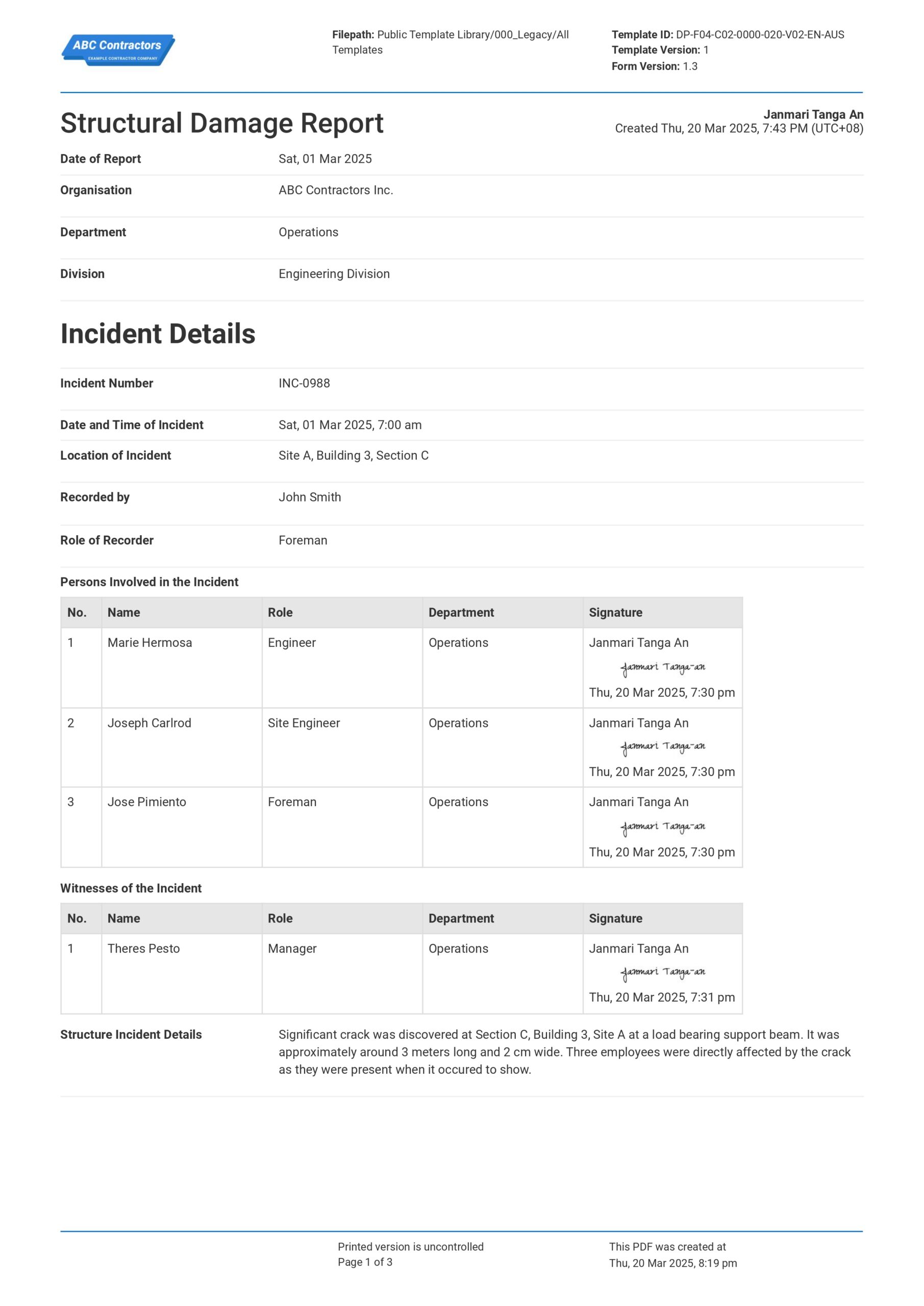
Use this structural damage assessment format online.
Signs of Structural Damage
We have spoken about which building parts are essential to examine, particularly in cases of damage.
The second question is, how can we determine if these structures are damaged?
The usual indicators of damage that might develop on these important structural components of the building will be discussed in this portion of the article.
Cracks
The structural support system of a structure is often damaged when shifting, settling, or degradation occurs. Cracks are a common occurrence in this situation. It is possible for cracks to begin as hairline-thin and barely obvious. In the event that the underlying reason fails to be addressed in an appropriate manner, these cracks will most likely get larger, longer, or spread over the course of time.
Warping and Deflections
The displacement or bending of structural elements under load is referred to as deflection. A variety of materials, including slabs, beams, columns, and even whole structures, may experience it. Materials naturally deflect when they are under stress. On the other hand, excessive deflection may result in performance issues, safety issues, and structural damage. Therefore, regulating and managing deflection is crucial to preserving a structure's integrity.
Corrosion
In most cases, corrosion of concrete takes place when the material is subjected to potentially hazardous environmental conditions or when it is mixed in a wrong way. Concrete may be penetrated by substances such as de-icing salts, high moisture content, and other chemicals, which can result in the concrete's interior degradation. Concrete structures are susceptible to corrosion, which is a serious problem that may have a substantial influence on the safety and durability of buildings.
Water
When water seepage, leaks, or wet spots in a structure continue over an extended period of time, the building's structural integrity may be compromised. Building materials decay when exposed to water, foundations crumble, and continuing shifting occurs as a result of moisture seeping into the earth and base materials after being exposed to water. If damp spots or leaks are not treated, they have the potential to compromise the structural integrity of the whole building structure.
Uneven Floors
Uneven floor levels and sloping rooflines are obvious indications that the structure of the building is becoming unstable and requires attention. When the interior floor surfaces seem to be slanted or uneven, this may indicate that the foundation is sinking in an uneven manner. This may be the result of soil issues or fractures in the foundation walls or footings. The early stages of a building's collapse are indicated by sagging floors and rooflines, which will quickly accelerate if the structure is not properly held up and levelled before the collapse.
How can you Improve your Damage Assessment processes?
Damage Assessment Software can make it much easier to capture damage assessment and site-based records.
Standardising report styles makes them more accurate, consistent, and easy to report on. It also makes it easier to make research reports for all forms.
With the right system. you can use drag and drop to build processes, make tasks, enter pre-filled text and text boxes, connect pictures with notes, GPS, comments, and tags, and automate features. You can add areas that are specific to your needs so that you can easily collect data in real time, even when you're not online, on your phone or computer.
It's easy to do site visit reports, and your team members can easily view your files and forms on their phones, tablets, and computers.
You can also easily store all of your site visit reports in your own database. This will make it easy for people to sign off on your work and let you know when certain steps of approval have been reached. With correct and up-to-date data, you can gain useful insights and make smart choices.
If you are still running your structural damage assessments manually, you could make your life a whole lot easier now.
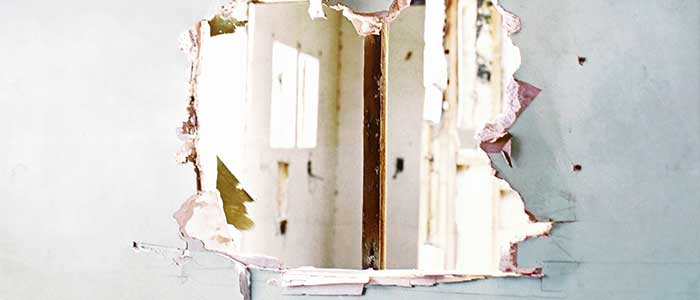
Punch list
Punch your way through those punch lists with this powerful template.

Clerk of works report
Manage clerk of works reports directly from site and more professionally using this smart digital form.

Pipe inspection
Ensure all of your critical pipes and infrastructure are laid and maintained properly using this structure.
